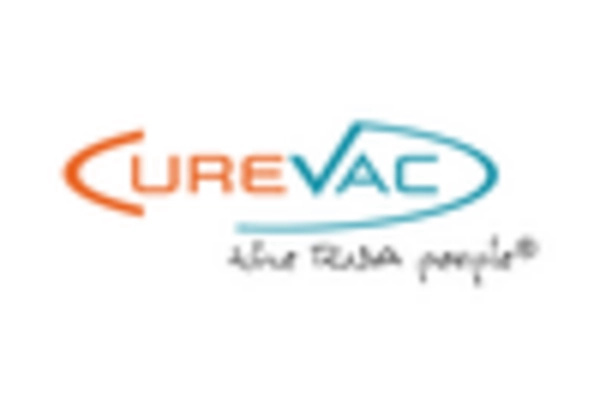Supportive Regulatory Environment
The Microneedle Drug Delivery System Market benefits from a supportive regulatory environment that encourages innovation and development. Regulatory agencies are increasingly recognizing the potential of microneedle technology to improve drug delivery and patient outcomes. This has led to streamlined approval processes for microneedle-based products, facilitating faster market entry. Additionally, government initiatives aimed at promoting advanced drug delivery systems are likely to bolster research and development efforts in this field. As regulatory frameworks evolve to accommodate new technologies, the market is expected to grow, with an anticipated CAGR of 10% over the next few years. This supportive environment is crucial for fostering innovation and ensuring that microneedle systems can meet the needs of healthcare providers and patients alike.
Expansion into New Therapeutic Areas
The Microneedle Drug Delivery System Market is poised for growth as it expands into new therapeutic areas beyond traditional applications. Initially focused on vaccines and insulin delivery, microneedle technology is now being explored for a variety of treatments, including biologics, monoclonal antibodies, and gene therapies. This diversification is likely to attract investment and research efforts, as the potential for microneedles to deliver a broader range of therapeutics becomes apparent. The market is projected to see a significant increase in demand as pharmaceutical companies recognize the advantages of microneedle systems in delivering complex molecules that require precise administration. This expansion into new therapeutic areas could potentially double the market size within the next decade.
Rising Incidence of Chronic Diseases
The Microneedle Drug Delivery System Market is significantly influenced by the rising incidence of chronic diseases, which necessitate effective and efficient drug delivery methods. As the global population ages, the prevalence of conditions such as diabetes, cardiovascular diseases, and autoimmune disorders continues to rise. Microneedle systems offer a promising solution for the management of these diseases, allowing for painless and self-administered treatments. The increasing demand for innovative drug delivery systems that can improve patient outcomes is likely to propel market growth. According to recent estimates, the market could experience a growth rate of around 12% annually, driven by the need for effective management of chronic conditions through advanced delivery methods.
Increased Focus on Patient Compliance
The Microneedle Drug Delivery System Market is witnessing a heightened emphasis on patient compliance, which is crucial for the success of therapeutic regimens. Microneedles offer a less painful and more convenient alternative to traditional injections, which may enhance patient adherence to treatment protocols. Studies indicate that patients are more likely to self-administer medications when using microneedle systems, as they are less invasive and easier to use. This increased focus on patient-centric solutions is likely to drive market growth, as healthcare providers and pharmaceutical companies seek to improve treatment outcomes. The market is expected to expand as more stakeholders recognize the potential of microneedle technology to address compliance issues, particularly in chronic disease management.
Technological Advancements in Microneedle Drug Delivery
The Microneedle Drug Delivery System Market is experiencing a surge in technological advancements that enhance the efficacy and safety of drug delivery. Innovations in microneedle fabrication techniques, such as 3D printing and laser cutting, are enabling the production of more precise and effective microneedles. These advancements are likely to improve patient outcomes by allowing for controlled release and targeted delivery of therapeutics. Furthermore, the integration of smart technologies, such as sensors and microelectronics, into microneedle systems is anticipated to facilitate real-time monitoring of drug delivery, thereby increasing the appeal of these systems in clinical settings. As a result, the market is projected to grow at a compound annual growth rate (CAGR) of approximately 15% over the next five years, driven by these technological innovations.

















Leave a Comment